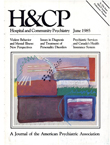Patterns and Major Determinants of Homicide in the United States
Abstract
Criminal homicide has increased steadily during the past two decades to account today for more than 1 percent of deaths in the United States. After providing background information on the rates and patterns of bomicide in the U.S., the author uses the literature to present a twofold discustion of factors affecting the incideuce of homicide: those that act as a deterrence to crime, such as punishment, and environmental and biological factors that can interact in a complex way to produce violence and murder. Exampies of these latter factors include firearms, drug and alcobol abuse, genetics, race, psychiatric disorders, metabolic states, the economy geograpbic region, the media, and political instability.
Access content
To read the fulltext, please use one of the options below to sign in or purchase access.- Personal login
- Institutional Login
- Sign in via OpenAthens
- Register for access
-
Please login/register if you wish to pair your device and check access availability.
Not a subscriber?
PsychiatryOnline subscription options offer access to the DSM-5 library, books, journals, CME, and patient resources. This all-in-one virtual library provides psychiatrists and mental health professionals with key resources for diagnosis, treatment, research, and professional development.
Need more help? PsychiatryOnline Customer Service may be reached by emailing [email protected] or by calling 800-368-5777 (in the U.S.) or 703-907-7322 (outside the U.S.).



